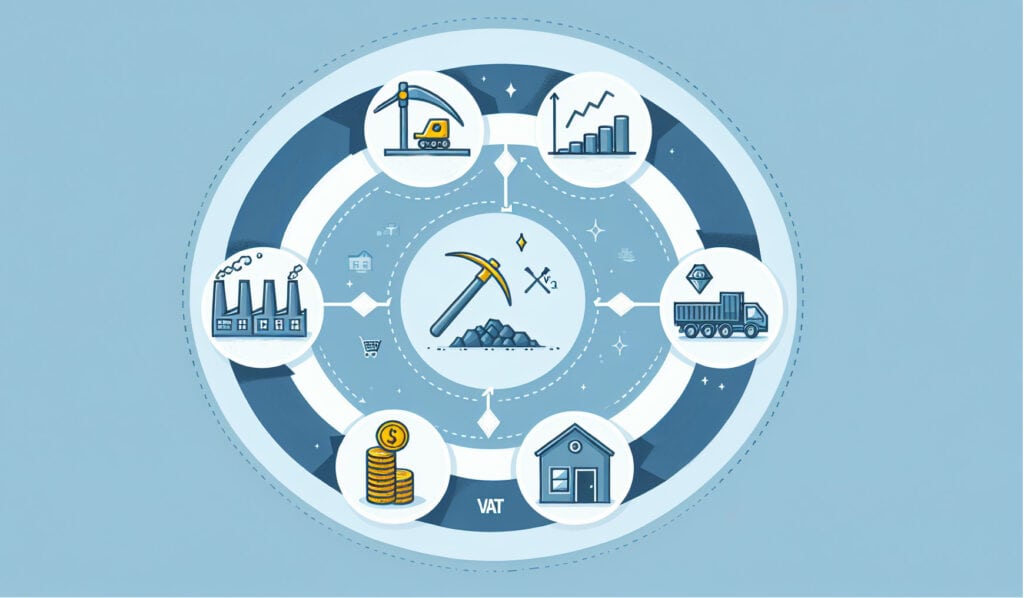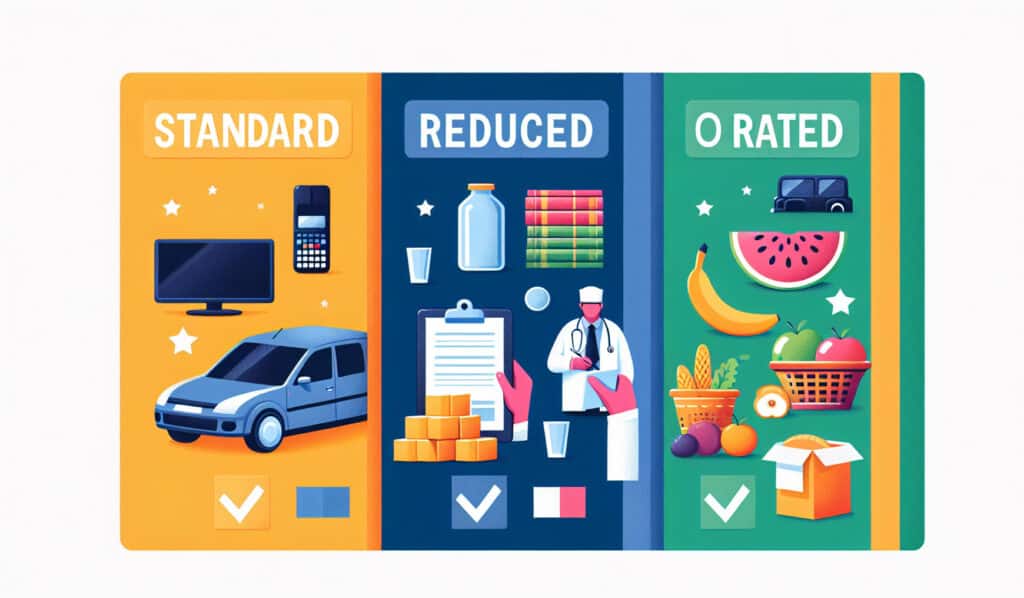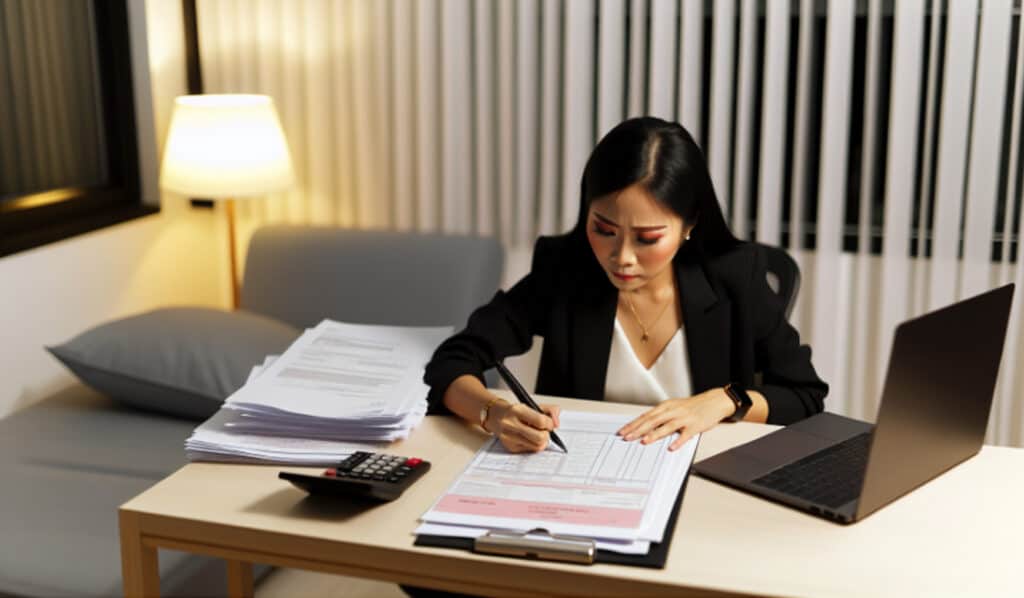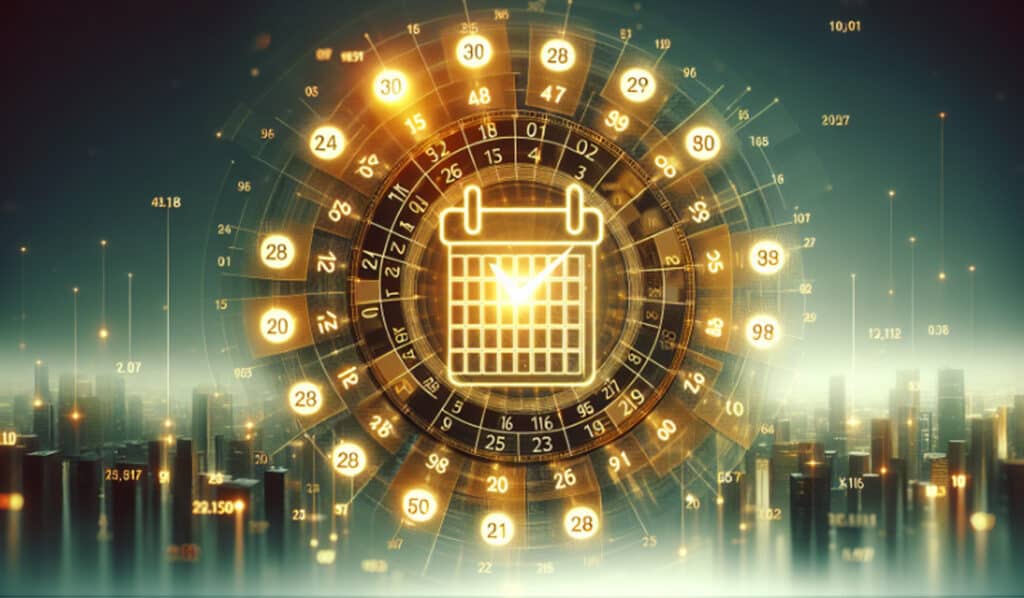Updated on: Mar 13, 2024
This guide is intended for contractors and freelancers who want a basic understanding of VAT and how it works for their business. What we have found is many of our new clients who don’t have any previous experience working for themselves have no idea about VAT and how it works. Once you have been running a VAT registered business for several months it becomes straight forward and just another part of doing business, but the initial introduction to VAT can be overwhelming for some people.
So here we have a plain English guide that hits all the key points about VAT for UK based contractors and freelancers who are looking for an easy-to-understand introduction to the world of VAT.
This guide demystifies ‘what is VAT,’ shows how it’s calculated, and explains its role in your transactions, both as a business owner, and also for your clients. VAT is one of several business taxes that contractors should be aware of.
Key Takeaways
- VAT is a consumption tax levied at each stage of the supply chain, where businesses collect incrementally added value and consumers ultimately bear the tax cost on final purchases. A consumption tax means that the tax kicks in when something is consumed. So, for example, if you buy a new computer for £900 (which is made up of £750 net cost plus £150 in VAT) then you have spent £150 in VAT (which goes to the government). If you hadn’t bought the computer you would not have spent the £150 in VAT. Its a great tax collection system for the HMRC because the more you spend (consume) the more VAT you are paying to them.
- Businesses calculate VAT that they owe to the HMRC by subtracting input VAT (tax paid on purchases) from output VAT (tax charged on sales), remitting the difference to the HMRC.
What is Value-Added Tax (VAT)

VAT, a unique type of consumption tax, applies to the purchases of goods or services. Unlike sales and income tax systems, VAT, also known as services tax, is borne by the consumer but collected in increments by VAT-registered businesses at each value-adding stage of the supply chain, from:
- raw materials production
- manufacturing
- distribution
- retail
to the final consumer purchase.
The calculation and payment of VAT revolve around input and output VAT. In basic terms in the UK, input VAT is VAT that’s incurred on goods or services you purchase in the course of making VAT-able supplies. On the other hand, the VAT charged on the supply of VAT-able goods/services your VAT-registered business makes is your output tax.
You will see the terms input tax and output tax used extensively when talking about the VAT and it’s useful to be able to remember what each of them mean. The way I remember it is like this. Output tax is something that you bill “out” to your clients. So, if an invoice that you send out to your client for work you have done includes 20% VAT, then this VAT is “output tax”.
Which by default means input tax is the opposite. For any bills that come into your business (phone bill, IT purchases, travel, general business expenses etc) then if they contain an element of the VAT then this VAT is “input tax”.
Far from merely confusing consumers and businesses, VAT serves an important function in generating government revenue. As the world’s most prevalent consumption tax, it’s extensively utilized across the European Union and beyond.
Elevate Your Accounting Experience
Dive into a world of exceptional tax, planning, and accounting solutions crafted for freelancers like you.
Take charge of your financial future.
Email us, call us, send a message from our Contact Us page, or even sign up online right away.
Your path to financial clarity starts here.

The Mechanics of VAT: How It Works in Practice
Having understood what VAT is, it’s time to examine its practical application. We mentioned that VAT is added at every point of the supply chain where value is added.
Lets take a look at a simplified example of the process used to manufacture and sell a UK-made wooden walking stick for £36 (incl VAT) by an artisan woodworker. To keep things simple let’s say the woodworker has no other costs other than buying the raw material, which we know is unlikely because they would also need to buy tools, pay rent for a workshop, and pay a monthly subscription for the business Shopify website etc.
First you have a mill owner who sells sawn timber to an artisan woodworker. A single piece of sawn timber is sold to the artisan for £10 + VAT, and this is enough timber to make 5 walking sticks.
The woodworker then manufacturers 5 walking sticks from the single piece of timber and sells them for £36 incl VAT each.
Total output tax in this scenario is the total VAT included in the sale of 5 walking sticks, which is £6 x 5 = £30.
Total input tax is £2 (the VAT charged on the piece of sawn timber).
This means the total VAT due to the HMRC by this woodworker is 30 – 2 = £28. We can summarise a few things from this;
(a) The VAT that was charged to the woodworker of £2 is recouped by them in the VAT calculation. This means VAT-registered business do not incur any VAT costs when making purchases. Unless specific rules apply (which for our clients they never do), when going from being a non-VAT registered business to a VAT registered one, your business immediately has a reduction in costs, because anything it purchases that has VAT on it now costs less (because the input VAT can now be reclaimed).
(b) To expand the point, if all the businesses in the supply chain of making wooden walking sticks (lets include the forestry owner, mill, Shopify, the property landlord etc) are VAT registered, then none of them carry the cost of any VAT – any input VAT costs can always be reclaimed in their VAT return.
(c) Its the final consumer that pays the VAT. That is what makes VAT a consumption tax. This is the person who went on to the artisan woodworkers Shopify website and purchased the wooden walking stick for £36. They are the last link in the VAT chain, and they are the ones that actually pay the VAT. The artisan woodworker simply collects the VAT from them and sends it across to the HMRC (after deducting of course any input tax costs).
This system of VAT collection has important implications for businesses:
- It requires them to be part of the revenue collection process for the HMRC (a VAT registered business is effectively a tax collector working for free on behalf of the HMRC).
- VAT registered businesses are responsible for accurately calculating and remitting VAT to the government.
You might wonder about VAT’s role in international transactions. Most services, supplies, and goods you supply to countries outside the EU are considered outside the scope of UK VAT. This means that VAT wouldn’t need to be charged on these transactions, making VAT a flexible tax system that adapts to the needs of businesses operating in the global marketplace.
VAT Rates and Categories

Much like products and services, VAT rates are also diverse. Depending on the nature of the goods or services, VAT can be charged at a standard rate, a reduced rate, or even a zero rate. But how do these rates differ, and when are they applied?
It’s time to explore the various VAT rates and categories.
Standard rate goods and services
The standard rate of VAT in the UK is currently 20%. You’ll find this rate applied to most goods and services, and this is the rate that pretty much our entire client base of VAT-registered clients uses when they create invoices for their clients.
Understanding Zero-Rated Goods
If you are supplying goods such as those included below then you would invoice your clients using a VAT rate of 0%. It’s very rare that our clients produce and sell these kinds of goods, but its still worth knowing about. Certain goods fall under the category of zero-rated goods. These can include:
- most foods
- children’s clothing
- books
- newspapers
- printed publications
- water and wind turbines for certain residential purposes.
Of course if your business purchases any of these kinds of goods then you will notice on the receipt that the rate of VAT charged will be 0%.
Navigating Reduced VAT Rate Items
Certain goods and services qualify for a reduced VAT rate, also known as a goods and services tax in some countries. In the UK, this rate is 5% and applies to items like those listed below. Again, its very rare for our clients to fall into this category, but its worth mentioning so you have an awareness of these reduced rate categories:
- Children’s car seats and safety equipment
- Certain building and construction services
- Installation, repair, and maintenance services for renewable source heating systems
VAT Registration: Who Needs to Do It?

As a business owner, the question of whether to register for VAT might arise. In the UK, businesses must register for VAT when their taxable turnover exceeds £85,000 over a 12-month period or if it is expected to exceed this threshold in the next 30 days.
But what if your turnover is less than the VAT threshold? You’re not required to register, but you can choose to do so voluntarily. This might be beneficial for your business, as it can allow you to reclaim VAT on business expenses and present a more established image to customers.
Once you’re registered, you can reclaim VAT on certain business expenses. Only VAT-registered businesses can reclaim VAT on their business expenses, and they are eligible to backdate claims for VAT on purchases made up to four years for goods and six months for services prior to their registration date.
So, while VAT registration can seem complex and daunting, it can be a useful tool for businesses. By understanding the requirements and potential benefits, you can make an informed decision about whether VAT registration is right for your business.
Filing VAT Returns: A Brief Guide

VAT registration imposes certain obligations on businesses, one of which includes filing a VAT return every three months (your business can also file monthly, or annually, but every three months is the most common). This VAT return reflects the business’s output VAT (sales) and input VAT (purchases) for that accounting period.
In the UK, the filing of VAT returns necessitates the use of Making Tax Digital (MTD) approved software. This ensures that records are kept digitally and returns are submitted electronically.
Calculating the VAT owed is a straightforward process. You need to subtract your input VAT from your output VAT. If your input VAT is greater, you can reclaim the difference, with the VAT return reflecting all necessary details of your sales and purchases.
The obligation extends beyond return filing; businesses must also electronically pay any VAT due to HMRC. This needs to be done within 1 month and 7 days after the end of the accounting period to avoid late payment penalties. To make things easy you can always set-up a debit debit instruction with the HMRC so they automatically collect the VAT due.
For new businesses in particular, filing VAT returns can seem an intimidating task. But with the right understanding and tools (like MTD approved software), it can become a manageable part of your business operations.
Impact of VAT on Business Operations
Beyond influencing consumer prices, VAT also substantially impacts businesses. One of these impacts is on pricing strategies. The cost of VAT might lead businesses to adjust their prices, either passing these costs onto consumers or absorbing them to maintain competitive pricing.
For all of our contractor / freelancer clients who work through recruitment firms, or who work for other VAT registered end-clients, becoming VAT registered themselves will not normally present any issues. VAT simply get added onto the agreed contact rate, and the additional cost on your invoice for VAT is claimed back from the HMRC by the VAT-registered entity you are invoicing.
However, if you sell goods or services to the public (or any other non-VAT registered entities) then when your business becomes VAT registered, and you add 20% to your sale prices, the overall cost to your customers also increases by 20%.
In addition to pricing strategies, VAT can also cause cash flow issues for businesses. If a business is waiting for a VAT refund, this can cause issues, especially when the tax has been paid upstream but not yet reclaimed from tax authorities.
But it’s not all negatives. Businesses can reclaim VAT paid on goods or services like computers, office furniture, and transportation if these expenses are strictly used for business purposes.
So, while VAT can pose challenges for businesses, it can also provide opportunities. By understanding the impacts of VAT on business operations, businesses can strategize effectively and make the most of the opportunities VAT presents.
VAT and the Consumer: Understanding Your Tax Burden

Despite businesses’ pivotal role in collecting VAT, the ultimate tax burden rests with the consumer. As a consumer, you pay VAT on the full purchase price of goods and services. This means that when you’re buying that laptop or having your home repaired, you’re paying VAT on top of the listed price.
This is because the final consumer bears the full VAT cost. This highlights the notion of the tax burden being shifted to the end of the supply chain, with the consumer ultimately carrying this burden.
What implications does this hold for you as a consumer? It means that the price you pay for goods and services is higher due to VAT. The price you see on the shelf or the quote you get for a service includes VAT, and this is a cost that you, as the consumer, have to bear.
Moreover, because consumers are not eligible to deduct input VAT like businesses can, they experience the tax burden directly. This is a key feature of the VAT system that differentiates it from sales tax systems and the income tax system in the US, where the tax is typically calculated at the point of sale and added to the purchase price. In contrast, an indirect tax, such as VAT, is applied at each stage of production and distribution.
So, the next time you’re shopping or hiring a service, remember the VAT that’s included in the price. Understanding this can help you be more informed about the prices you pay and the tax you bear as a consumer.
Summary
In this journey through the world of VAT, we’ve explored its definition, how it works, the various rates and categories, the impact on businesses and consumers, and more. As we’ve seen, VAT is far more than just a tax; it’s a complex system that affects businesses and consumers alike. It affects pricing strategies, cash flow, and accounting responsibilities for businesses, while impacting the prices consumers pay. Knowledge of VAT is not just useful for businesses; as consumers, understanding VAT helps us be more informed about the prices we pay and the tax we bear.